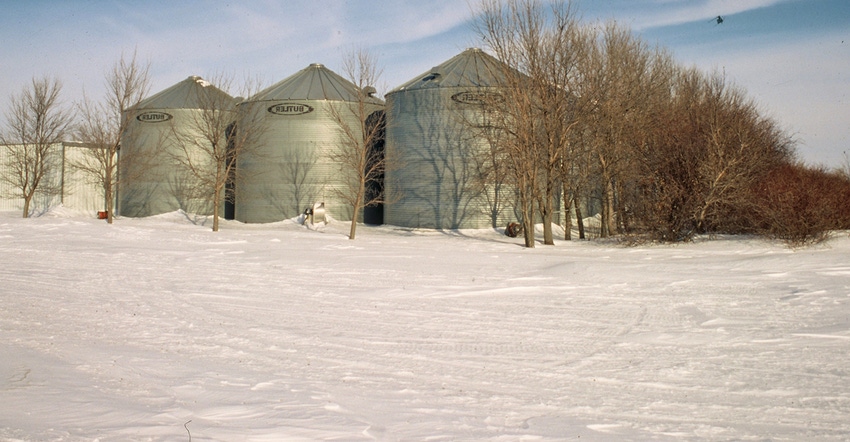October 25, 2017

With corn and soybeans being harvested later than normal, you need to make sure the grain is OK once you get it in the bin. Ken Hellevang, North Dakota State University Extension agricultural engineer, says there the top three things to do soon to protect its value long-term are:
• Check its temperature. Warm grain creates conditions conducive for insect infestations. Reducing the grain temperature reduces insect activity. Insects in stored grain become dormant below about 50 degree F. In addition, the allowable storage time, which is related to mold growth, is approximately doubled for each 10 degrees F the grain is cooled. For example, cereal grains, such as corn at 16% moisture content, can be stored about 70 days if maintained at 70 degrees F — and about 230 days at 50 degrees F. Allowable storage time based on the ability to germinate the seed is approximately one-half as long.
• Cool stored grain to near the average outdoor temperature using aeration. Grain temperature should be cooled to within about 20 degrees F of the coldest average monthly temperature. In North Dakota, for example, with an average January temperature of 7 degrees F, grain should be about 20 to 30 degrees F. To estimate the cooling time of 56 pound-per-bushel grain, divide 15 by the airflow rate. About 75 hours of fan time is required to cool the grain using an airflow rate of 0.2 cubic feet per minute per bushel (cfm/bu.). Cooling times of other grain are the ratio of 56 pounds and the grain weight. Barley with a weight of 48 pounds per bushel will cool more quickly than corn at 56 pounds per bushel (48 divided by 56 equals 0.86).
• Add “bin check” to your calendar. You need to check stored grain frequently until it has been cooled to the winter storage temperature. Check and record the grain’s temperature and condition at several locations. Temperature history can be used to detect grain warming, which may indicate storage problems. Look for indications of problems, such as condensation on the roof or crusting of the grain surface. Probe to examine grain below the surface. Temperature cables are an excellent tool to measure the grain temperature, but they only measure the temperature of the grain next to the sensor. Grain is a very good insulator, so warm or hot grain just a few feet from the sensor may not be detected.
Source: NDSU Extension
You May Also Like




